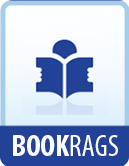From the Album of Sarah Apsey. Lamb seems to
have known very many
Sarahs.
Page 112. To Joseph Vale Asbury.
From Lamb’s Album. Jacob (not Joseph, as Lamb supposed) Vale Asbury was the Lambs’ doctor at Enfield. There are extant two amusing letters from Lamb to Asbury.
* * * * *
Page 113. To D.A.
From Lamb’s Album. Dorothy Asbury, the wife of the doctor.
Page 113. To Louisa Morgan.
From Lamb’s Album. Louisa Morgan was probably the daughter of Coleridge’s friend, John Morgan, of Calne, in Wiltshire, with whom the Lambs stayed in 1817—the same Morgan—“Morgan demigorgon”—who ate walnuts better than any man Lamb knew, and munched cos-lettuce like a rabbit (see letters to Coleridge in August, 1814). Southey and Lamb each allowed John Morgan L10 a year in his old age and adversity, beginning with 1819.
Page 113. To Sarah James of Beguildy.
Sarah James was Mary Lamb’s nurse, and the sister of the Mrs. Parsons with whom she lived during the last years of her life. Miss James was the daughter of the rector of Beguildy, in Shropshire. The verses are reprinted from My Lifetime by the late John Hollingshead, who was the great-nephew of Miss James and Mrs. Parsons.
* * * * *
Page 114. To Emma Button.
Included in a letter from Lamb to John Aitken, editor
of The Cabinet,
July 5, 1825.
Page 114. Written upon the cover of a blotting book. The Mirror, May 7, 1836.
Identified by Mr. Walter Jerrold. First collected
by Mr. Thomas
Hutchinson.
* * * * *
Page 115. POLITICAL AND OTHER EPIGRAMS.
Lamb was not a politician, but he had strong—almost passionate—prejudices against certain statesmen and higher persons, which impelled him now and then to sarcastic verse. The earliest examples in this vein that can be identified are two quatrains from the Morning Post in January, 1802, printed on page 115, and the epigram on Sir James Mackintosh in The Albion, printed on the same page, to which Lamb refers in the Elia essay on “Newspapers Thirty-five Years Ago” (see Vol. II.). Until a file of The Albion turns up we shall never know how active Lamb’s pen was at that time. The next belong to the year 1812—in The Examiner (see page 116)—and we then leap another seven years or so until 1819-1820, Lamb’s busiest period as a caustic critic of affairs—in The Examiner, possibly the Morning Chronicle, and principally in The Champion. After 1820, however, he returned to this vein very seldom, and then with less bitterness and depth of feeling. “The Royal Wonders,” in The Times for August 10, 1830 (see page 122), and “Lines Suggested by a Sight of Waltham Cross,” in the Englishman’s Magazine,




